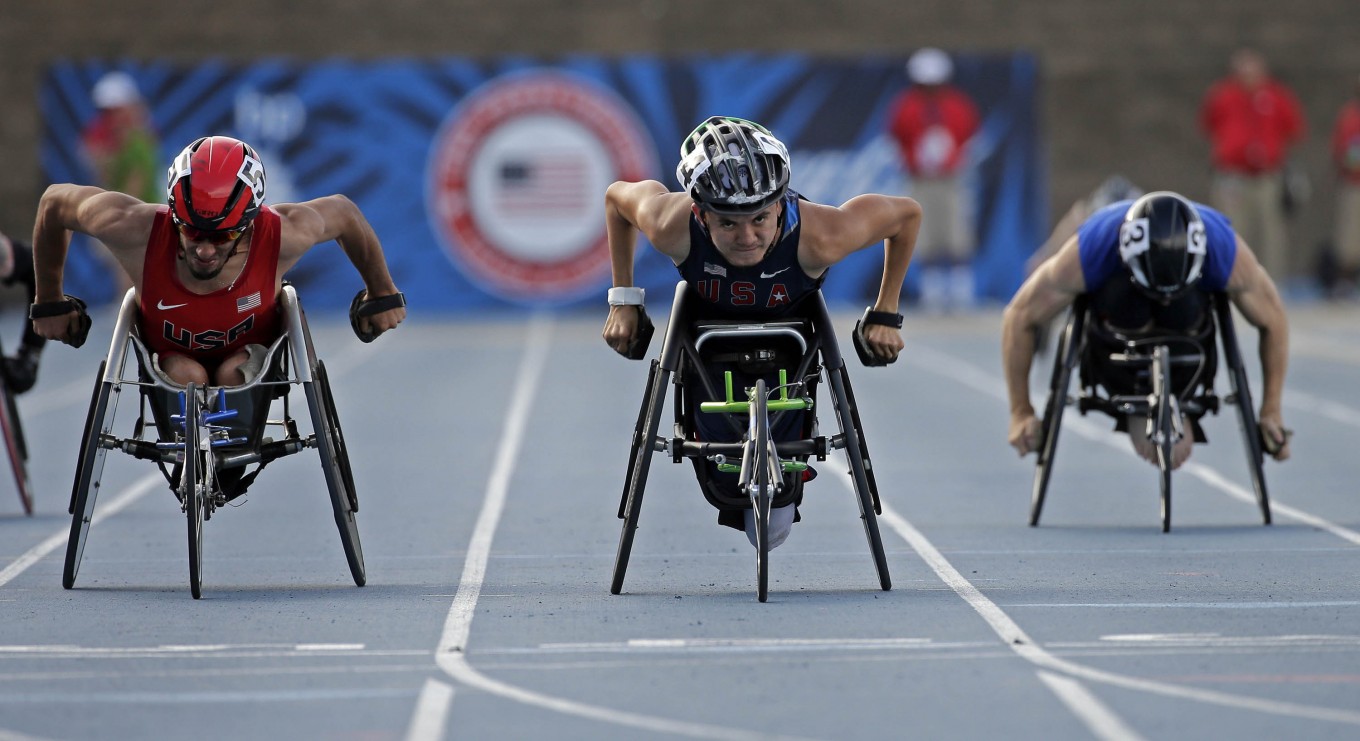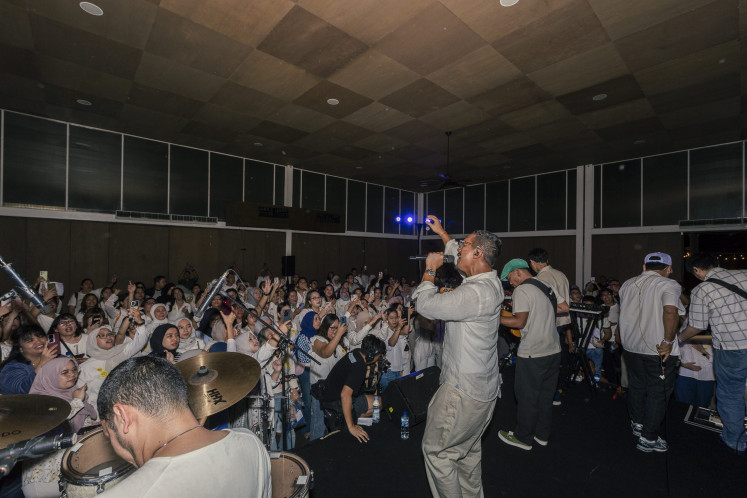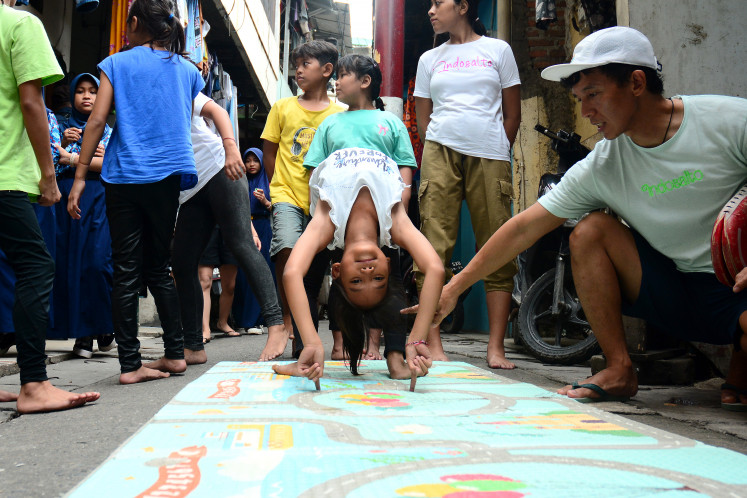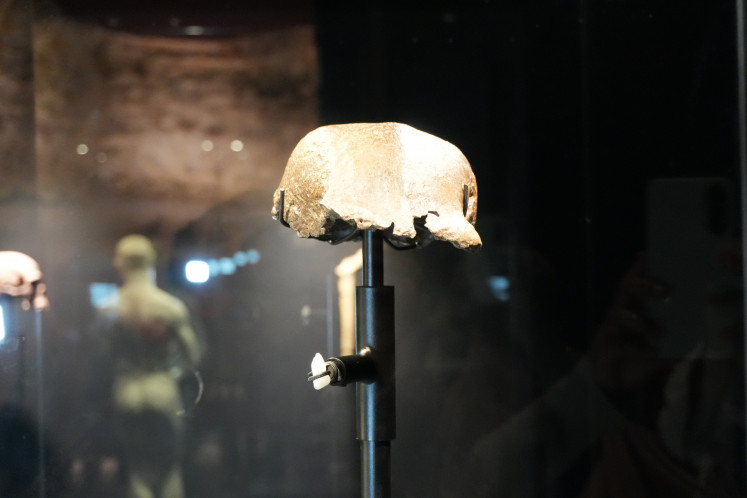Popular Reads
Top Results
Can't find what you're looking for?
View all search resultsPopular Reads
Top Results
Can't find what you're looking for?
View all search resultsPromoting disability inclusion in Indonesia: Lessons learned from the Paralympics
Thus, the main question is to what extent has Indonesia actually promoted disability inclusion in its diverse society?
Change text size
Gift Premium Articles
to Anyone
T
he 2016 Paralympics Games in Rio de Janeiro in Brazil, one of the most elite international sporting events for people with disabilities, has just wrapped up. Indonesia received one bronze medal through the amazing performance of Ni Nengah Widiasih in powerlifting.
The Indonesian delegation worked hard to prepare for and compete in the event. It is a good start for the country to participate in international events for people with disabilities, and this was shown in the doubling of the size of its delegation for the current Paralympics.
A number of lessons can be learned from the Paralympics, not only about the participation of people with disabilities in sporting events but also to reflect on how much effort has been made by Indonesia to create an inclusive society. Thus, the main question is to what extent has Indonesia actually promoted disability inclusion in its diverse society?
Disability in Indonesia
The United Nations Convention on the Rights of Persons with Disabilities (UNCRPD) defines persons with disabilities as: “those who have long-term physical, mental, intellectual or sensory impairments (including visual, speech, and hearing impairments) which in interaction with various barriers may hinder their full and effective participation in society on an equal basis with others”. As Indonesia ratified and became a party to the UNCRPD in 2011, it is required to implement the CRPD and ensure that national development programs are inclusive and accessible to people with disabilities.
The exact number of people with disabilities in Indonesia is unclear. According to Population Health Basic Health Research (Riskesdas) 2007, the proportion of people with moderate and severe disabilities in Indonesia was approximately 11 percent of the total population. However, it is estimated that the proportion is higher.
(Read also: Book Review: Politics in Asian sports)
Indonesia already has a number of laws that are specific to disability; e.g., Law No.4/1997 on Persons with Disabilities, Government Regulation No. 43/1998 on Efforts to Improve the Social Welfare of Persons with Disabilities). Law No. 39/1999 on Human Rights also states that each person with disabilities has the right to facilitation and special treatment and Law No. 25/2009 on Public Services states that public service providers need to provide special treatment to persons with disabilities. Unfortunately, the enforcement of these laws is still weak.
Social determinants of health of people with disabilities
The Paralympics shows us that physical activity is important for all including people with disabilities. As reviewed in The Lancet, physical activity contributes to good physical and mental health and leads to increases in a person’s quality of life. Physical activity, on the other hand, also contributes to equal participation alongside those who do not have a disability. TheParalympics has showed us that persons with disabilities can still be physically active and even compete in a number of sporting events. They can be role models for all and promote the importance of physical activity in improving health status.
As physical activity is one of the keys to an individual’s health status, it is important to be active every day and do exercise regularly. According to the World Health Organization (WHO) Global Recommendations on Physical Activity for Health, in order to improve health status, “adults aged 18–64 should do at least 150 minutes of moderate-intensity aerobic physical activity throughout the week or do at least 75 minutes of vigorous-intensity aerobic physical activity throughout the week or an equivalent combination of moderate- and vigorous-intensity activity”. This means that if we exercise regularly, we need at least approximately 30 minutes of moderate-intensity aerobic physical activity per day to meet the guideline (e.g., by walking, cycling, or doing sports). This guideline was developed for all and means that it can also be applied for people with disabilities with some adjustments to improve their health status. The most important thing is that we should avoid inactivity as it is a risk factor for a number of non-communicable diseases including diabetes and heart-related problems.
There are a number of social determinants of health that can contribute to participation in physical activities, particularly among people with disabilities: social exclusion, social support and transportation. Indonesian people still have strong prejudices, which cause them to presume that people with disabilities are unproductive and dependent on others. Furthermore, there are still negative attitudes toward people with disabilities which lead to social exclusion, stigmatization and discrimination; people with disabilities often experience societal barriers in public spaces such as facing stares or even mockery from other people. Social exclusion and discrimination can be one of factors that can reduce engagement to physical activity. These negative attitudes can lead to stress and feelings of isolation from physical activity. On the other hand, social support and good social relations are factors that contribute to the improved health status of individual.
(Read also: After gold, what's next for badminton mixed doubles queen Liliyana Natsir?)
It is also important to provide transportation access and infrastructure to support people in doing physical activity. There has been an increase in the number of public services that give access to persons with disabilities, however, Indonesia still needs to work more on this. There are limited sport facilities that provide access for people with disabilities. Moreover, transportion access to sport facilities can be another problem. Indonesia has not provided comprehensive disability access in most modes of transportation. The obvious example is that most bus services in Indonesia are not wheelchair-friendly (e.g., limited space for those with wheelchair, no standardized path to enter the bus). The same problems are also faced by pedestrians. Most pedestrian paths are unsafe and unpassable; most of them are damaged and full of holes. Wheelchair access is impossible. They have to use the street alongside cars and motorbikes. This problem does not only affect people with disabilities but also other vulnerable pedestrians such as the elderly and children as they feel unsafe on the road.
Homework for Indonesia
The Indonesian local government should consider better and appropriate access for people with disabilities by creating physical environments that can be used by everyone. It is important that local governments should engage and consult with people with disabilities when developing plans. The transportation system, buildings and other public facilities need to be improved so that they are more accessible and inclusive. As stated in the twin-track approach adapted to persons with disabilities, this is one of the approaches that can be implemented to promote an inclusive system for all with general, support and specialized services. Another approach is to enhance empowerment of persons with disabilities to support independent living, greater self-determination and greater involvement. This will lead to equal rights and opportunities for people with disabilities. In this case, the improvement in promoting disability inclusion in Indonesia could be beneficial for all including in improving health status through regular physical activity. It’s still a long way for Indonesia to achieve this but I believe that it is not impossible in the near future.
So what’s next? Let’s start promoting disability inclusion in our community and workplace and keep doing physical activity regularly to improve our health. Furthermore, Indonesia could engage more people with disabilities to participate in the sporting events and hopefully we can win more medals in the next 2020 Paralympics in Tokyo.
***
The writer has a background in health sciences, with a strength in quantitative data analysis. He is passionate about the science of health promotion, with research interests in tobacco control and social determinants of health. He works at Tulodo Indonesia, a social and marketing agency in Jakarta. He received scholarship from Australia Awards and completed a Master of Public Health at Curtin University, Western Australia. He can be found at Twitter @heribertusrinto.
---------------
Interested to write for thejakartapost.com? We are looking for information and opinions from experts in a variety of fields or others with appropriate writing skills. The content must be original and on the following topics: lifestyle ( beauty, fashion, food ), entertainment, science & technology, health, parenting, social media, and sports. Send your piece to community@jakpost.com. For more information click here.











